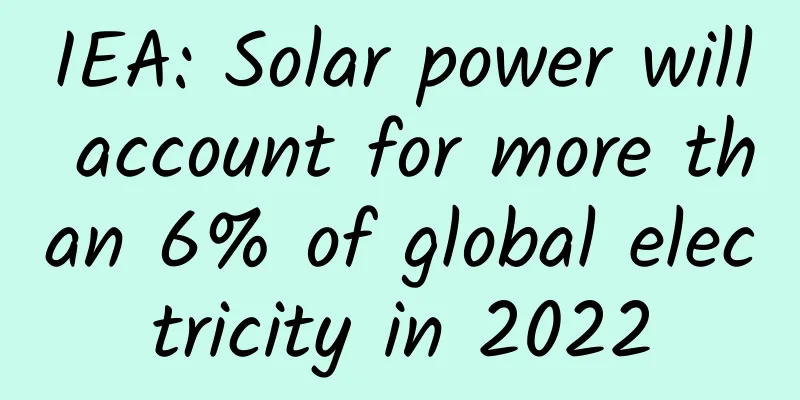Can wind turbines grow infinitely?

|
Produced by: Science Popularization China Author: Cheng Mingchen (popular science creator) Producer: China Science Expo On June 26, 2024, my country's independently developed 18MW semi-direct drive offshore wind turbine was successfully connected to the grid at the Shantou Wind Power Linhai Test Base in Guangdong Province, breaking the world record for the largest single-unit capacity of a grid-connected wind turbine. The localization rate of components of this unit has reached 100%, and the average annual power generation can reach 72 million kWh, which can meet the annual electricity consumption of about 40,000 households. On June 5, 2024, the 18MW semi-direct-drive high-power offshore wind turbine was successfully installed at the coastal wind power test base in Shantou City, Guangdong Province. (Photo source: Dongfang Electric Corporation) A few days later, on June 30, my country's independently developed 18 MW medium-speed integrated offshore wind turbine was successfully installed at the Huaneng Xianren Island Thermal Power Plant in Yingkou, Liaoning Province after more than a year of comprehensive testing and verification, marking that the wind turbine, which set the "two world firsts" records of a wind rotor diameter of 260 meters and a single unit power of 18 MW, is about to be put into commercial use. Offshore wind power technology research is an important means for my country to achieve energy security, build a strong maritime nation and other national strategic needs. More than ten years ago, China's offshore wind power industry was just starting. Today, China's wind power has led the global trend of large-scale wind turbines, and its own brand products have been innovated, taking the lead in entering the "no man's land" of wind power technology and industrial development. Wind turbines: Bigger is the way to go As technology advances, high-rise buildings, bridges, and industrial products such as televisions will gradually increase in size, and the same is true for wind turbines. In 1981, the world's largest wind turbine had a power of only 55 kilowatts (55kW). In 1995, this number slowly rose to 500kW, and in 1999 it reached 2 megawatts (2MW). However, since then, the rated power of wind turbines has skyrocketed, 5MW, 8MW, 10MW, 15MW, 18MW, 20MW and even 22MW. At present, this trend of large-scale generation shows no signs of slowing down. How do large wind turbines keep getting more powerful? The answer is: longer blades. Bigger blades extract energy from a larger area of wind as they spin, producing more electricity. The power a turbine generates is directly related to the area of the disk swept by the blades as they spin. 18MW semi-direct drive offshore wind turbine rolls off production line (Photo source: Fuzhou Evening News) So why are wind turbines increasing in size at such a rapid rate? This question is explored in a paper titled "Wind Turbines: How Big?" published in the November 2019 print edition of Nature. Professor Simon Hogg of the Department of Engineering at Durham University in the UK explained that, in short, there is only one core reason: to reduce energy costs. Although the cost of design, manufacturing, transportation, installation and maintenance will increase as the size of wind turbines increases, the power generation will also increase significantly. The large amount of data collected so far shows that the larger the size of the unit, the lower the average unit cost per kilowatt-hour (the ratio of the power generation income per kilowatt-hour to the total cost). It is precisely because of this rule that wind turbines will continue to grow larger. Unable to jump out of the limit boundary Longer blades will generate more power, but we have to take into account the strict laws of physics. Due to factors such as gravity, everything on Earth has a maximum size. For example, whether it is the largest animal on land, the elephant, the largest animal in the sea, the blue whale, or the tallest mountain, the tallest building, etc., everything in the world has a maximum size. Therefore, wind turbines are no exception, and the size of the blades cannot be increased indefinitely. First of all, weight is the first factor that needs to be considered. The weight of the blade will increase with the cube of the blade length. At the same time, in order to ensure the reliability and safety of the structure, each component needs to be reinforced with more materials, which will generate additional weight, thus bringing greater challenges to the design of large units. Each blade of the 10MW unit of Vestas of Denmark weighs 35 tons, and the nacelle will reach nearly 400 tons. The unit to be launched by GE (General Electric) in the United States will be equipped with 55 tons of blades, 600 tons of nacelles and 2550 tons of towers. Secondly, the limits of material performance also need to be considered. Theoretically, only when the materials that make up the wind turbine blades have sufficient structural bearing capacity can they support their continued growth. At present, the main beams of wind turbine blades have widely adopted the carbon fiber material system, which can be said to be the strongest material system. There are almost no other better choices for future blades. According to the limits of carbon fiber, it is roughly estimated that the largest blade will soon exceed 150 meters. Some people predict that the maximum length of the blade is 275 meters. 18MW medium-speed fully integrated offshore wind turbine installed (Photo source: CCTV News) Third, we need to consider the loss. Based on the current design, the air is assumed to be incompressible, and the linear speed of the blade tip must be limited to 90 meters per second, so the larger the impeller, the slower the speed. But even so, the high-speed movement of the blade tip will cause the blade to collide with raindrops and waves, causing serious erosion risks. Within 3 years, the leading edge shape of the offshore wind turbine blade will be damaged, and the power generation efficiency will drop significantly. Finally, there is the issue of transportation. Each blade the size of Big Ben must be transported in one piece, which requires huge ports, giant ships and cranes. Due to the limitations of road width and culverts on land, the transportation of blades on land has reached a bottleneck, so currently super-large wind turbine blades are installed at sea. Large-scale development direction As wind turbines continue to grow in size, the various problems they face become more prominent. However, most engineers currently adopt a "constant approach to change" approach, simply lengthening blades, raising towers, and reinforcing core components. The design concept has not changed, and there is essentially no difference between a large unit and a small unit that differ in size by 10 times. As the core component of wind turbines, blades have always been an unavoidable part in the process of large-scale development of wind turbines. The mainstream wind turbines use three blades, but in fact, two blades can also absorb roughly equal wind energy and generate similar amounts of electricity. Obviously, if the wind turbine uses a two-blade solution, its overall weight will be greatly reduced and the blade length can be increased accordingly. However, the two-blade solution will produce serious unbalanced loads, which is not conducive to the long-term stable operation of the unit, and this is why it rarely appears on the market. The most direct and effective solution to the blade transportation problem mentioned above is to divide the blade into two or more sections. However, compared with single blades, in order to ensure the reliability and safety of the segmented connection area, the segmented blades are often heavier and have higher load levels, which is not friendly to the large-scale units and is more difficult to design. Despite this, many wind power companies are currently actively investing in the research and development of segmented blades, which will be launched in recent years. Conclusion Just 10 years ago, wind power was still a new thing, and the mainstream view at that time never believed that it could be operated commercially. But now wind power is occupying the energy and power market at a speed unknown to mankind. Although the size of wind turbines is also increasing, it is foreseeable that its maximum size will reach or approach the limit in the next 5-10 years, and we are about to witness history. References [1] VACLAV SMIL: Wind Turbines Just Keep Getting Bigger, But Theres a Limit The biggest blades will soon top 100 meters, and some people are talking of 275 meters—but the laws of physics must be taken into account [2] Simon Hogg: Wind turbines are already skyscraper-sized – is there any limit to how big they will get? [3] Wind turbines are already skyscraper-sized – is there any limit to how big they will get? |
<<: Can sleep-aiding aromatherapy really cure insomnia? Don’t believe it anymore, because…
>>: I don’t want to repeat it! E-cigarettes are really not the “white moonlight” of smokers…
Recommend
How to make users addicted to your product? 5 steps!
"Information overload" is the current s...
The secret behind Facebook ad’s high click-through rate materials!
Whether it is cross-border e-commerce or overseas...
Android uses LeakCanary to detect memory leaks
Four types of Java references In Java, there are ...
7 Micro-Interactions to Improve User Experience
As we all know, we always judge a book by its cov...
Huang Zhizhong personally taught: "35 Days of Super Persuasion" (Issue 12)
Do you have the following problems on Zhiyang? 01...
When LeTV's pole hits "Red Sparrow 2", domestic FTG sparks a craze for large-screen arcade fighting games
For many players, it is hard to resist the thrill...
Spicy noodles, hotpot, chicken leg rice...Why can't some people stop eating salty food?
Everyone seems to know that eating too much salt ...
A deep dive into the hidden rules of “WeChat Points Wall”!
In APP operation and promotion, especially iOS pr...
How to develop a successful online event planning plan?
This article mainly talks about how to develop a ...
Escape from Beijing, Shanghai and Guangzhou after 4 hours, a self-congratulatory marketing trick!
Yesterday morning on my way to work, I saw a WeCh...
Is server hosting beneficial for big data deployment?
In the emerging IT industry, there is another use...
China Industrial Technology Software Industry Alliance: 2020 Industrial Internet APP Development White Paper
A preliminary analysis was conducted on the overa...
How to increase and maintain community activity?
The various communities we see are very lively, b...
Who “painted” those colors in the fireworks?
When the colorful fireworks bloom in the dark nig...
How to improve user activity of products?
Based on the recent in-depth understanding of use...









